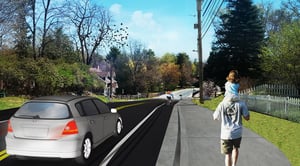This 5-step preliminary design process used by one project team helped answer the question, “Rehab or reconstruct?” with a solution that worked for all stakeholders.
When the time comes to stop patching our streets and start looking for a longer-term solution, we’re faced with an age-old infrastructure question: rehab or reconstruct?
In this article, we dig into the overall preliminary design process and draw insights from a complex corridor project example in Washington County and the City of Marine on St. Croix, Minnesota. By examining the process used by this project team, we can glean valuable lessons for municipal leaders seeking solutions that align their goals with those of the community.
“With communities becoming increasingly connected, our project teams know we can’t design a solution that leaves out a critical piece of the picture: We need participation and acceptance in the design process from community members who will be living with the solution every day,” says Dustin Cesafsky, SEH Project Manager.
1. Beginning with the end in mind
After years of patching and routine maintenance, the pavement along a corridor traveling through residential areas of Marine on St. Croix, Minnesota, and into the rolling countryside of Washington County, needed to be updated.
Knowing a design process that integrated comprehensive public engagement would help resolve key issues and gain community acceptance, a team of city and county staff and their consultant set out to understand the long- and short-term goals and objectives for the corridor.
Given the project’s sensitivities, the project team solidified a short list of key goals that would resonate with anyone undertaking street projects today. The goals included:
- Achieve community acceptance through stakeholder engagement process
- Improve safety and pavement condition in the corridor
- Identify and implement storm drainage improvements that balance all needs
- Improve multimodal facilities
- Capitalize on available funding
- Protect (avoid, minimize, mitigate) natural resources and wetlands
- Consider (protect, maintain, enhance) area's rural and historic character
With the length of the corridor and its varying character, however, the project team knew a one-size-fits-all solution would fall short of these goals. In this case, the best solution would be, in fact, many solutions.
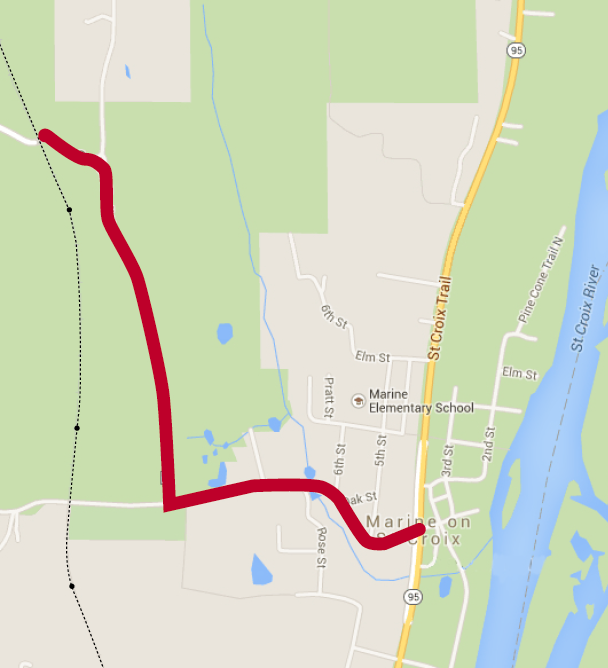
The segment of the corridor in Marine on St. Croix, Minnesota, was due for updates.
2. Considering constraints and opportunities using context zones
To meet each of the key goals consistently, and to help communicate design constraints and opportunities to the public, the team divided the corridor into three segments or “context zones.” Each segment in the corridor was defined by its varying character and unique constraints.
Zone One
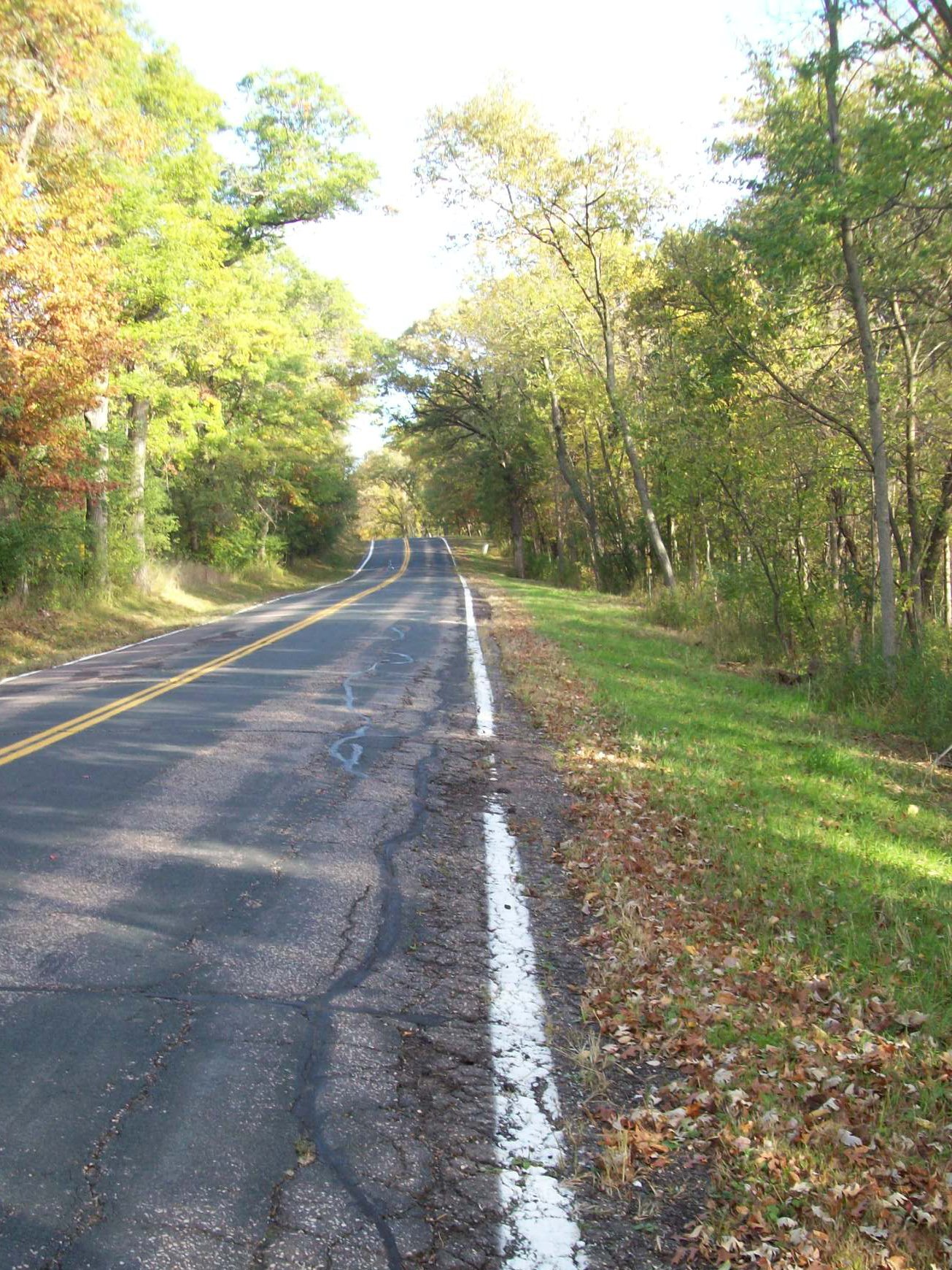
Zone Two
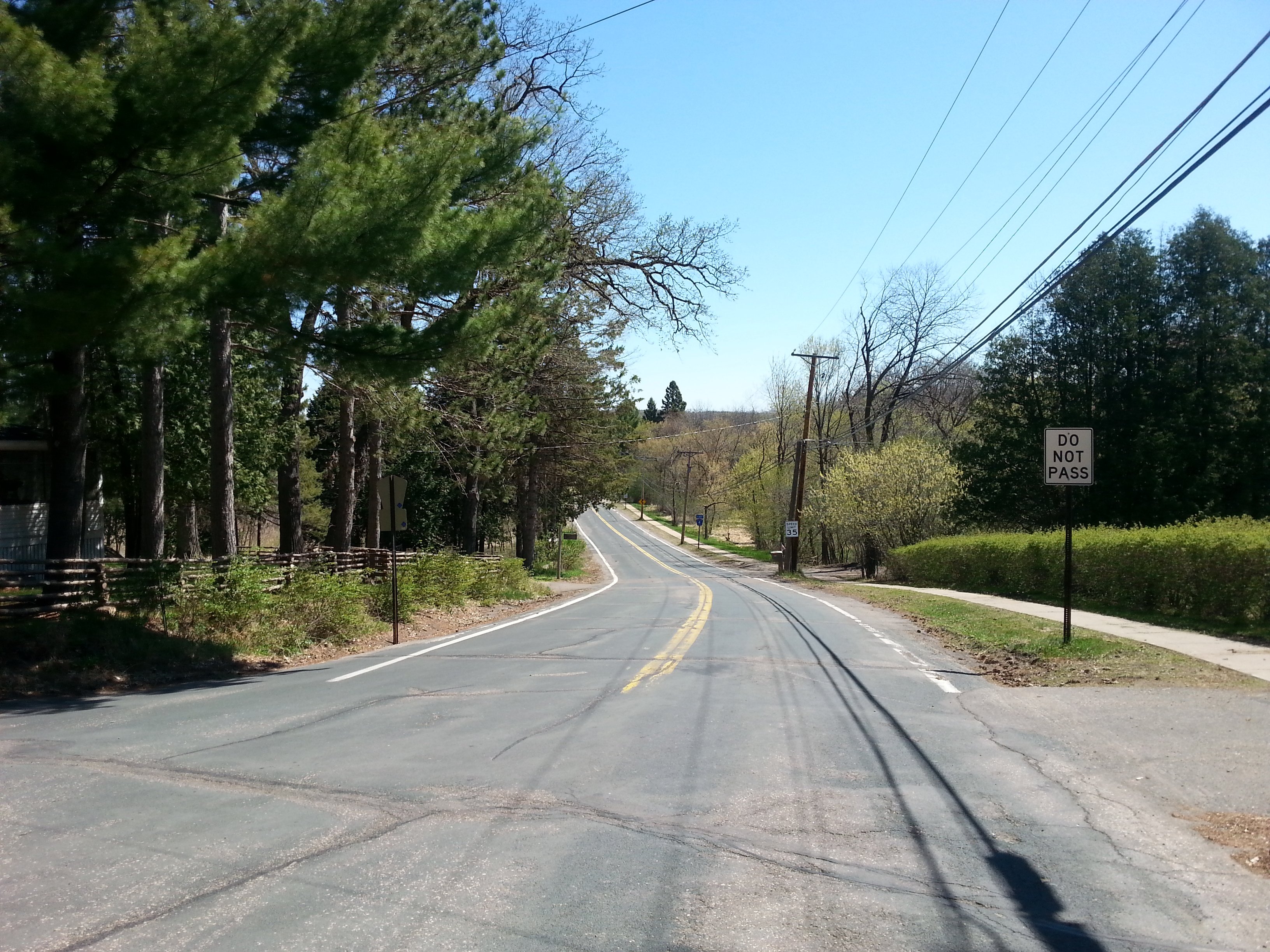
Zone Three
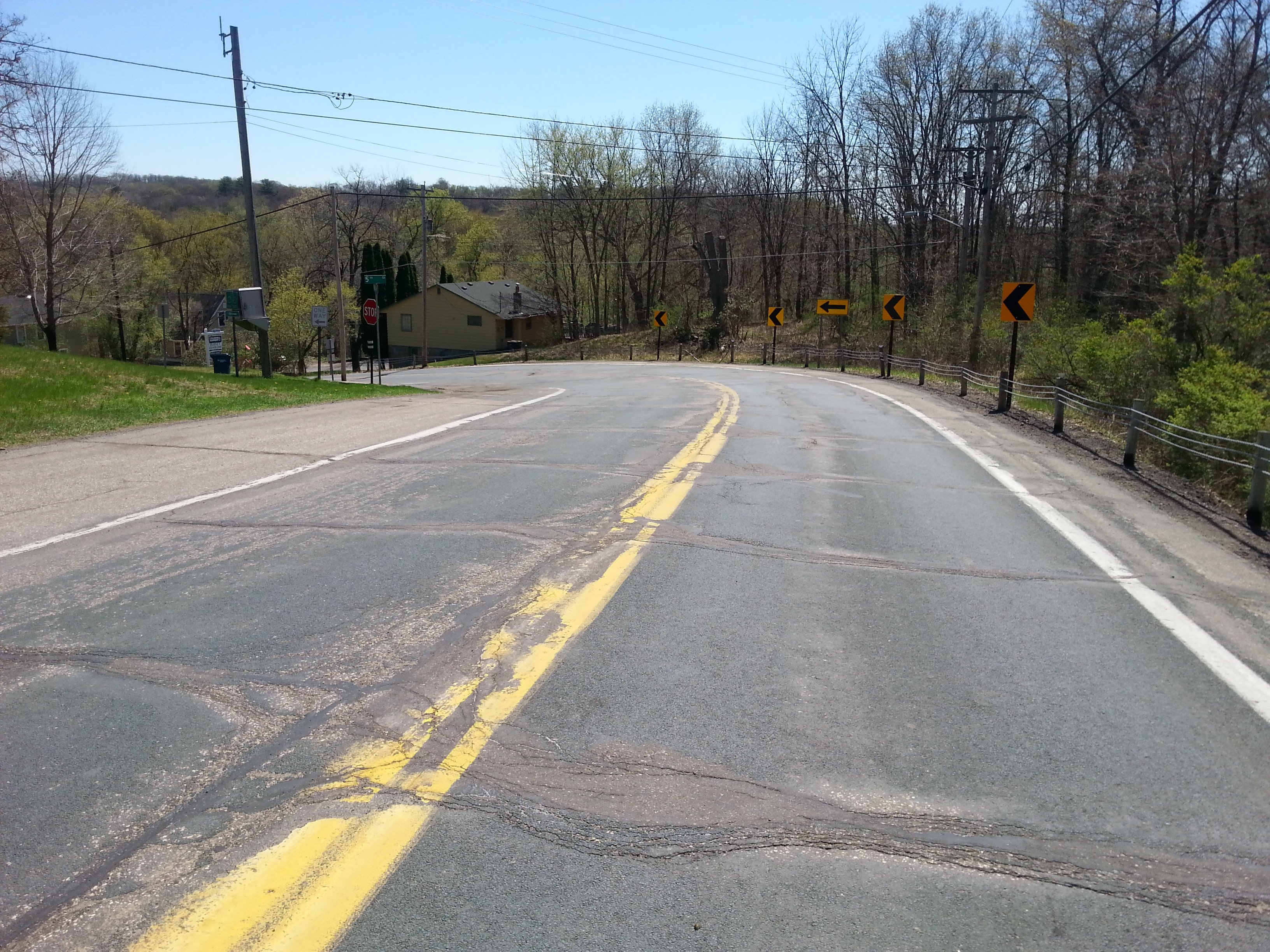
3. Designing alternatives for each zone
Once the project area was segmented into zones, the team began designing options for each. For this project, the team designed four alternatives for each of the zones, except for Zone One (more on that below).
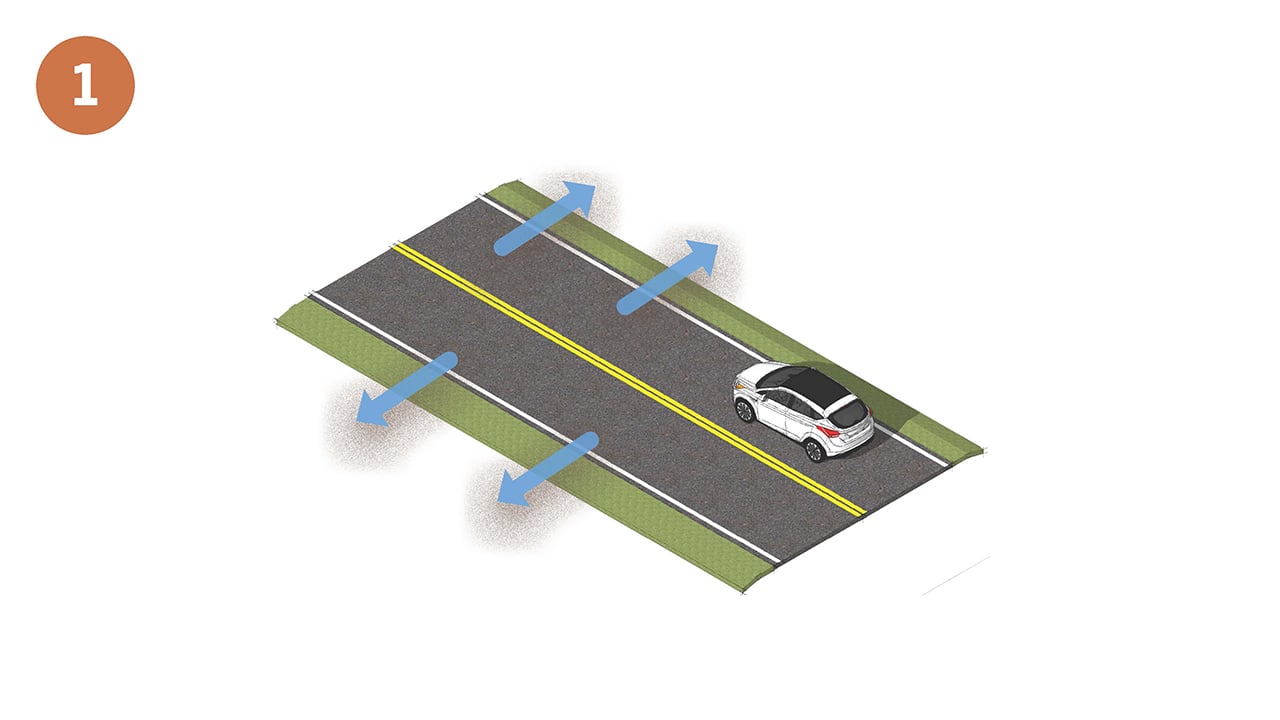
Rehabilitate Existing – Surface water flows directly into nearby property or wetlands. Does not improve water quality or flooding issues.
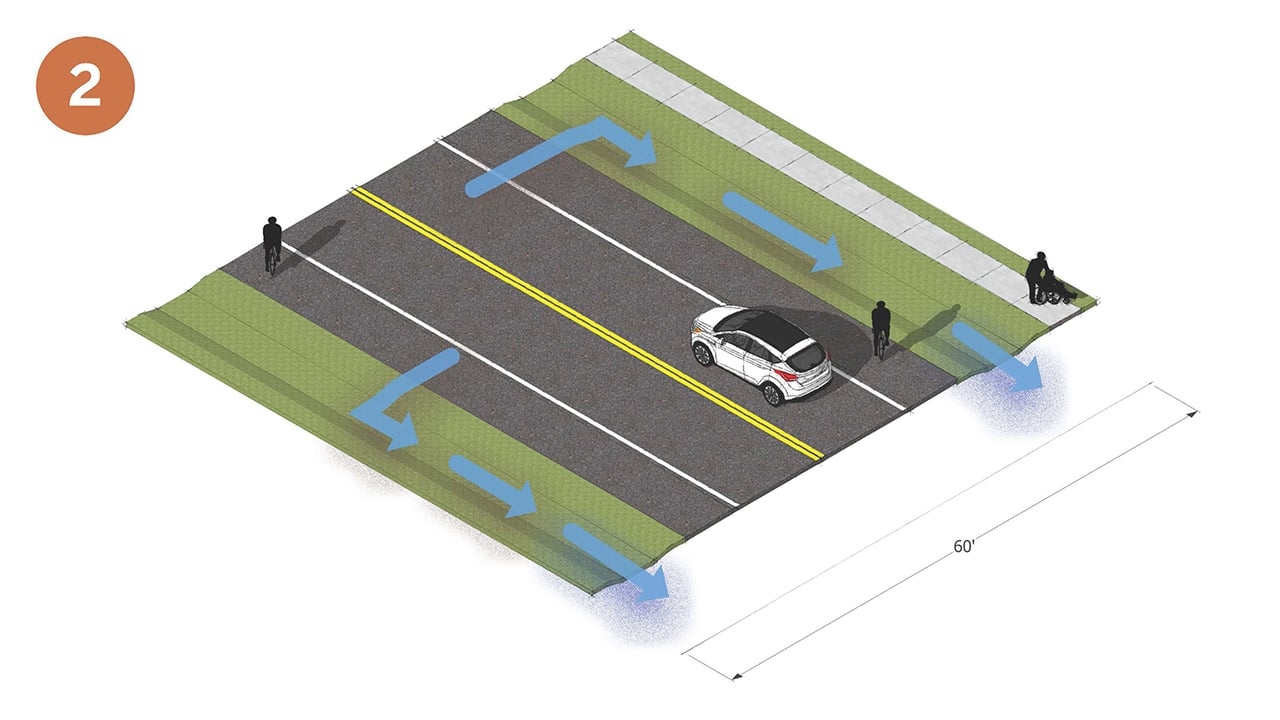
Reconstruct, Ditch Drainage – Improves water quality and flooding issues, but has widest construction footprint.
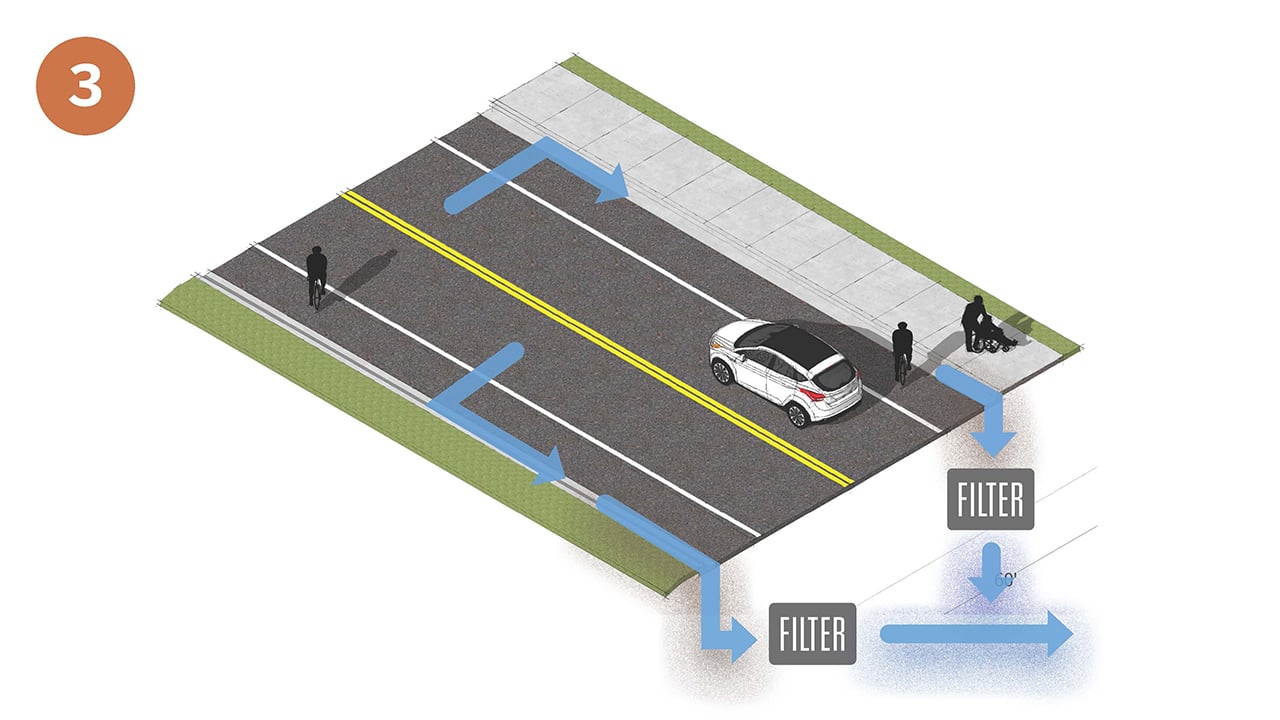
Reconstruct, Curb & Gutter Drainage – Improves water quality and flooding issues, and has narrowest construction footprint.
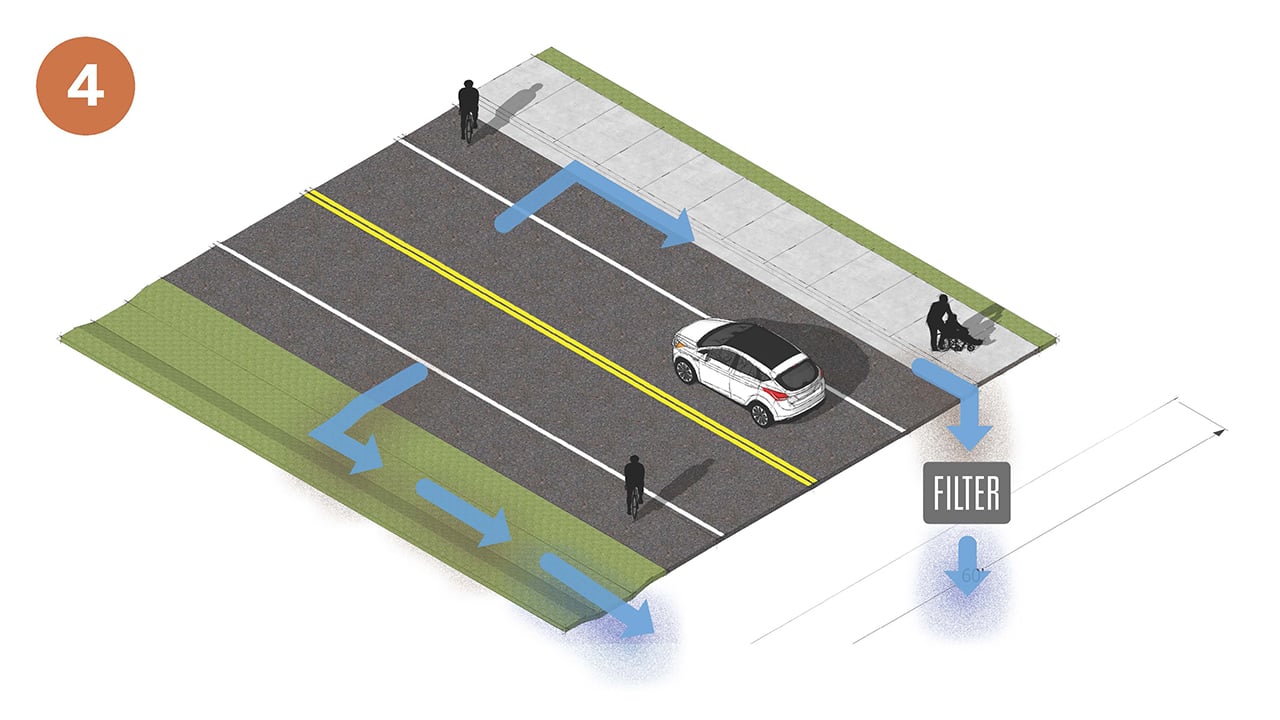
Reconstruct, Hybrid Drainage – Allows flexibility for context-sensitive design. Improves water quality and flooding issues.
Why four solutions? Drainage.
"Water, just like traffic, expedites the wear and tear of road surfaces.” says Cesafsky. “Here, the team emphasized the significance of effective drainage design in ensuring the longevity of road pavements. This approach involves crafting various solutions that focus on the diverse methods of capturing and treating water for quality before releasing it into environmentally sensitive areas nearby."
To that end, preliminary designs for each segment included one rehabilitation option along with three reconstruction options, each handling drainage differently: ditch drainage, curb and gutter drainage, and a hybrid drainage solution combining ditch on one side of the road and curb and gutter on the other.
Zone One, as mentioned, was an outlier on this project. No alternatives were designed other than simple replacement of the pavement due to right of way limitations, environmental factors, and budget constraints. Also, a pavement rehabilitation was the only option that kept the rolling hills and curves valued by the community.
Unable to make any fundamental changes to the roadway, the team was still able to implement some improvements. They addressed safety by designing slightly narrower lanes, adding a slightly wider shoulder, improving ditch and culvert drainage, and including an intersection connection.

4. Evaluating and refining the options
The designs were refined over a period of time through a feedback loop created by formal and informal stakeholder engagement. Whether public meetings or conversations with individual property owners, the project team continued collecting input that was used to improve and enhance the design options.
Design options finalized, the project team needed an organized method for comparing the trade-offs of each. The team kept scoring simple by giving each design a pass or fail rating based on whether or not it met the project goals. The design team and community members could glance at the alternatives and quickly understand which alternatives best aligned with project goals. Scores tallied, the hybrid system (offering a mix of ditch and curb-and-gutter drainage solutions) came in first, with curb and gutter coming in a close second.
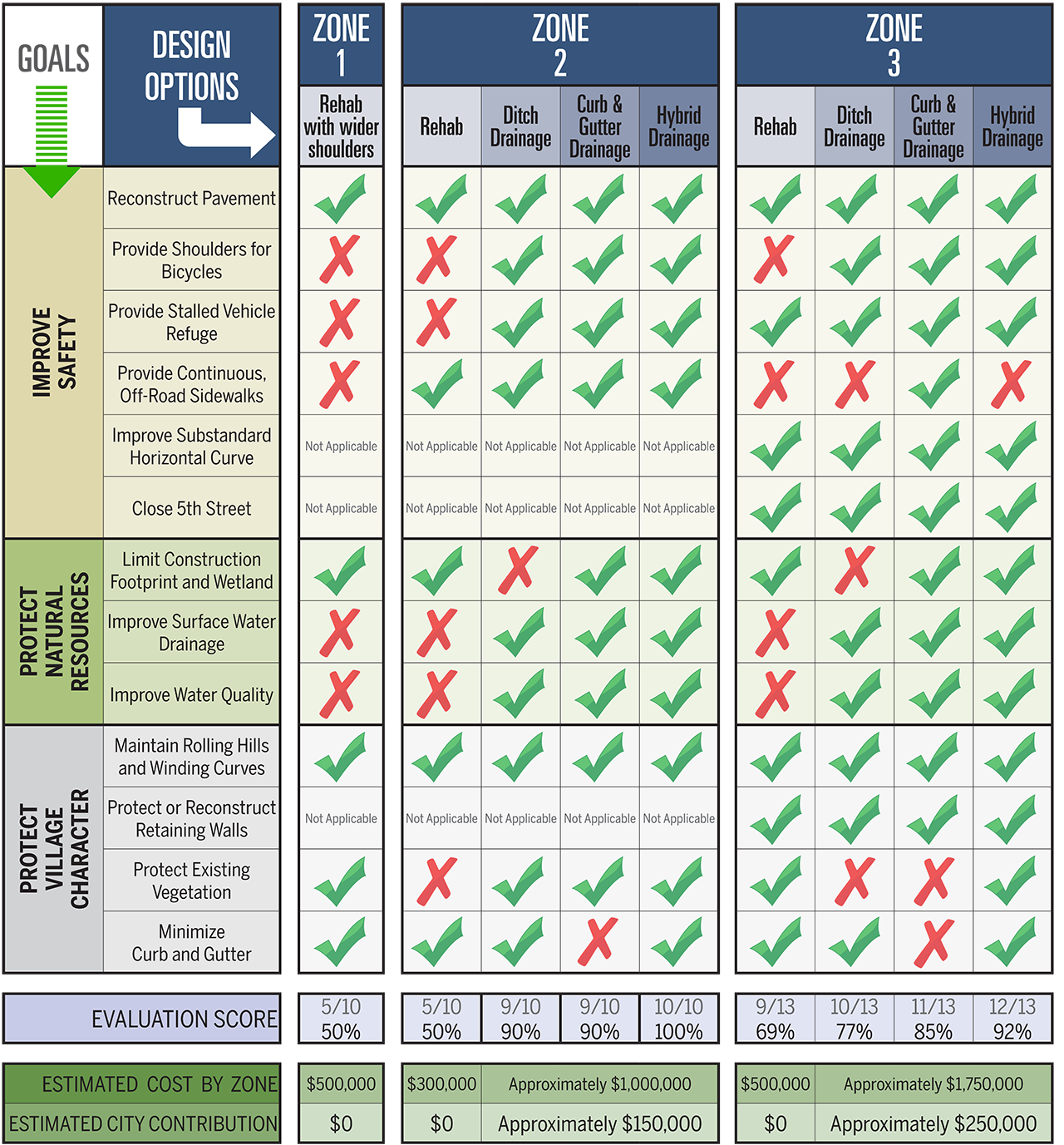
5. Selecting the best alternative with community help
Finally, and in order to ensure that the community had another opportunity to provide feedback, the project team invited the public to weigh in on the alternatives at an open house. Attendees were able to voice their opinions and provide comment.
What did they prefer?
Much to the surprise of the project team, the solution preferred by the community also brought the most change: curb and gutter.
Cesafsky reflects, "Had the design team proposed curb and gutter initially, there might have been resistance from the community. However, the inclusive preliminary design phase, characterized by numerous interactions with an engaged and respectful community, facilitated collaborative problem-solving."
That sentiment was echoed by Kristin Petersen, SEH engagement specialist on the project.
“Resistance to change is a powerful force in any collective decision,” says Petersen. “We knew from the outset that a high level of communication, with both the greater community and individual property owners, was needed. In the end, the focus on engagement throughout the process built trust and allowed the community to embrace change.”
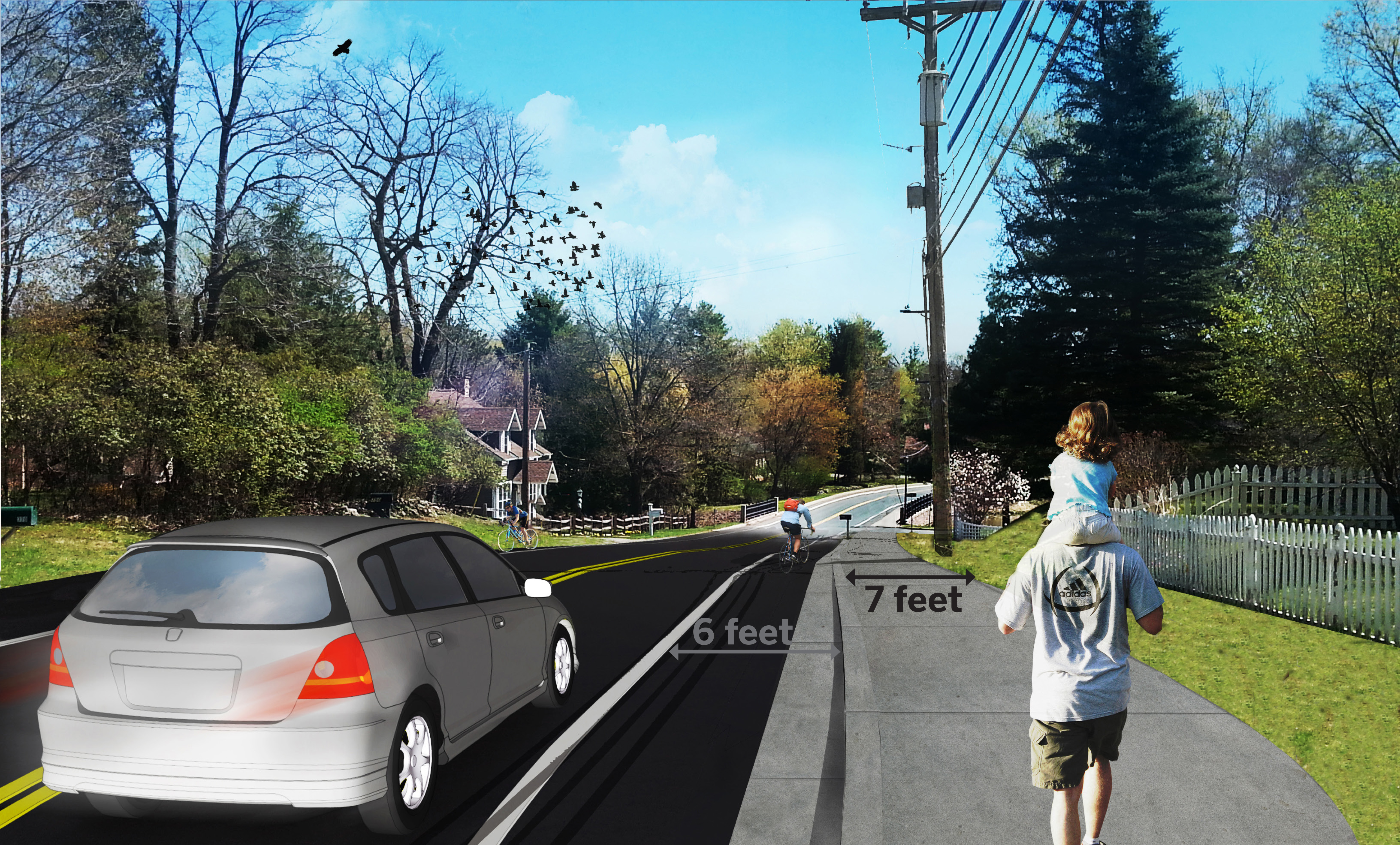
4 Tips for Better Preliminary Design
1. Start at the end. You won’t get anywhere without first determining the purpose and need for your project and then developing a clear vision for success. Kick off the project with a meeting (or series of meetings) that involves an inclusive goal-setting process where necessary stakeholders weigh in. Understand what each stakeholder needs then work toward it.
2. Give yourself options, but not too many. The preliminary design process is, in part, about selecting the best option from the shelf through a series of refinements. Too many options, however, will slow down the decision-making process and make communication with the public difficult. Follow your gut and intuition. You’ll know you have too many when they become difficult to explain from one another.
3. Save a seat at the table for the community. When the community is left out in the beginning, they can show up in the middle or end of your project with significant opposition, resulting in expensive delays. Invite them to weigh in at important stages of the project and, through your dialogue, you’ll gain the acceptance you need to move forward.
4. Be flexible, but firm. By letting stakeholders weigh in, preliminary design implies a flexibility toward other possible solutions. It’s okay to help everyone understand what design details are non-negotiable and that the City Council and County Board, with recommendation from staff, make the final decisions. Hopefully, you have developed enough respect and trust through the process so that even those are accepted.
Bringing it all together
Today’s reconstruction projects are different from those undertaken years ago. Engineers, who originally focused on designing for cars and vehicular safety, now also incorporate designs for pedestrians, bicyclists, and other users. We also have more regulations and best management practices in place, along with additional tools to address or manage surface water runoff. A well-executed preliminary design process can make the most of these challenges and opportunities while legitimizing your project for all stakeholders.
About the Experts

Dustin Cesafsky is a Project Manager who helps cities and counties make practical infrastructure decisions.

Kristin Petersen, AICP, NCI, LEED AP®, is a senior planner and engagement specialist dedicated to helping clients build projects the community loves.

.png?width=1014&height=1255&name=SEH_Logo_RGB%20(1).png)
